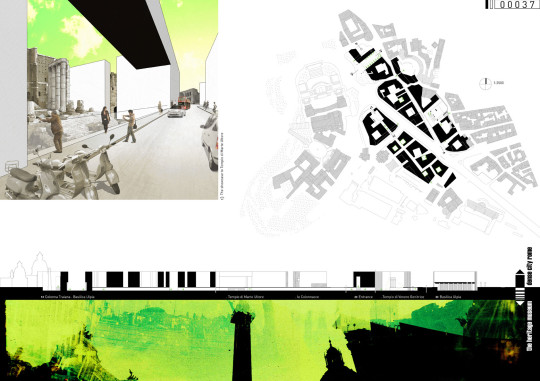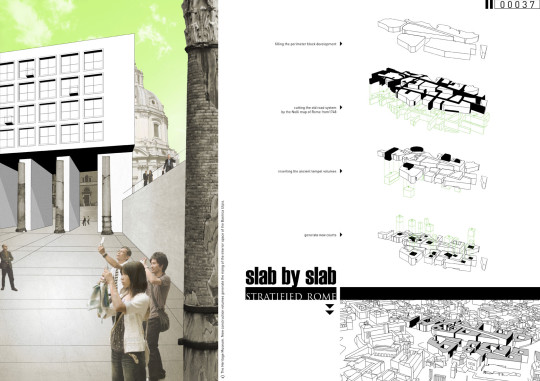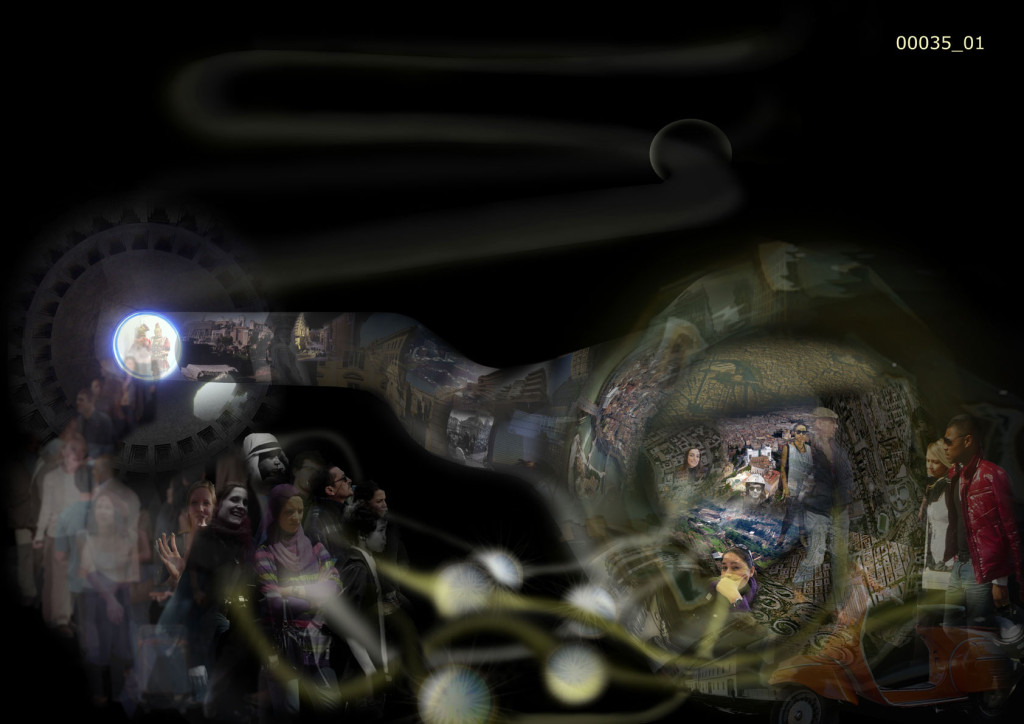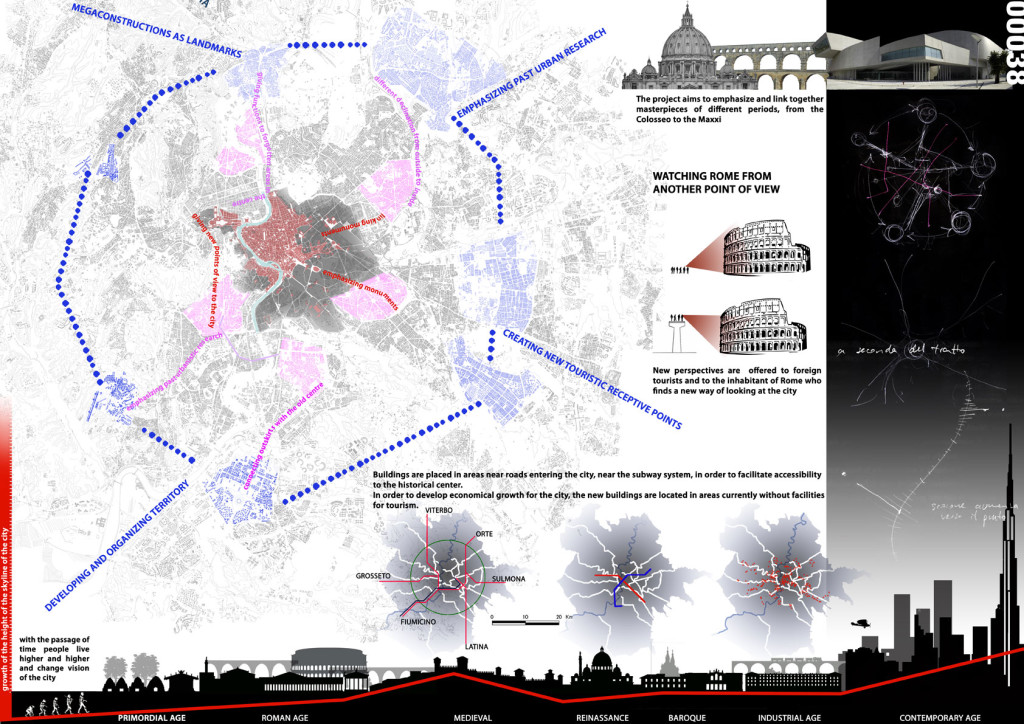Info:
Title: Slab by Slab - Code: 00037Contest: Rome / 2010
By: C. Böttner / A: Müller
Views: 2562 Likes: 0
Votes:
JUERGEN MAYER H. 0 FRANCESCO LIPARI4 FELIPE ESCUDERO1 FRANCESCO GATTI 7 MICHAEL CATON 63.6
Slab by Slab


Rome- the Eternal City. Ancient World and Modern Age encounter each other inRome as hardly as in another metropolis. Archaeological evidences and excavation fields pull through wide parts of downtown to the city limits. Urban fabric is cut, urban denseness stopped. The active modern life flows and develops itself around the urban core.
Romemakes desperate efforts to preserve the historical heritage. However the city almost leaves her centre to the tourism. On the ancient forums, between basilicas and temples moves numerous tourists – beyond the real urban life. As a split in the time holes are plugging like a museum in the urban fabric. Refer to the past. But don´t be able to set new urban courses. Which remains is fear of contact – fear to breach, to destroy, to losing the cultural inheritance – the own background and identity.
But does it succeed to immerge into the ancient world amidst the coulisse of fragments? Does the ancient Rome is capable of rising in our mind´s eye – his buildings, places, alignments – with the play of monumentality and nice details, which be carved in stone?
What does remain of the ‘Eternal City’ if she is not revolving, rediscovering and updating by herself?
The concept „slab by slab – Stratified Rome” provides the preservation of the ancient heritage and at the same time their reintegration in the city-denseness.
To the structural layers of time a further – a modern layer will be added.
Like an archaeologist who´s excavate stratum by stratum of the past the stratification ofRomewill be developed further to the future. The here and now lays over the past as a cloth.
The three main building and urban historical epochs – Antiquity, Middle Ages and Now – moves with their buildings on top of each other, cross together and will be interweaved to a space-time-carpet. Ancient ruins will be preserved and involved into the new forms. It will be breathed new life into them. Historical alignments and proportions will be readable and perceptible again in the new structures. The city assimilate her structural heritage again – integrate it – give them and the space between new live.
Examples like Tempio di Adriano, Basilica di San Nicola in Carcere or the Teatro di Marcello showing that the principle of transformation – of updating – is not new inRome. The elements of various times coexists and exists on the basis ofanother. Life-supporting measures will give the ancient ruins new and also natural identity again. The layers are self-sufficient and contains their history readable in theirselfes.
With the new layer the excavation layer will be conserved and maked accessible and perceptible to everyone at the same time. To the ancient elements it gives new live and achieves them for the future.
The work engages in the re-densification alongside the Via dei Fori Imperiali.
Thereby the area of the Forum Romanum knowingly will leaved open as an excavation field.
At first, the area along the actual road-axes will backfilled with urban denseness. New volumes orient itself on the height of environmental construction. In this mass the configuration of the medieval alleys and yards lifts off in different heights. As next, volumes in the dimensions of ancient temples and basilicas grow up in it. So they will be formed as a negativ in their old dimensions. New inserted courts alow an illumination of the blocks and an up-to-date use. The smaller courts pass the layer of the city to the layer of excavation.
Looming ruins will be involve in the layer of now. They will be conserved in their constellation and their historical context. They enter into a dialogue with new buildings. So the ancient ruins get a part of their importance and meaning from times past in their new interpretation back.
Solitary relicts like the Colonna Traiana will be structural hold and get their natural urban scale back.
The urban space gets urban proportions again. The view is broken. The flaneur is surrounded by urban denseness.
The wideness of big road-axes is fed by small of the structure emergent alleys. Alignments, places, entries and alleyways bring lost habitation and live quality. High gateways lead in small passages which open into wide courts. Showcases open up directed views on ancient elements.
Out of noise of the present city you could plunging down to the ancient stratum – on the layer of excavation. Here it will be opened up a new point of view. Isolated, the observer may engage in the excavations. An expedition under and amid the new urban layer – through the texture of ancient and medievalRome. The attraction of recovering lure with the play of wideness, tightness and unforeseeable opening vistas. Vistas through the time.
With the act of immersion and emersion between layers the Antiquity and the Now will be interweaved. Visual connections give orientation. Excavation fields, exibitions spaces and courts as well as negativ-volumes of the ancient buildings generate the level of The Heritage Museum – above it the dense cityRome.






